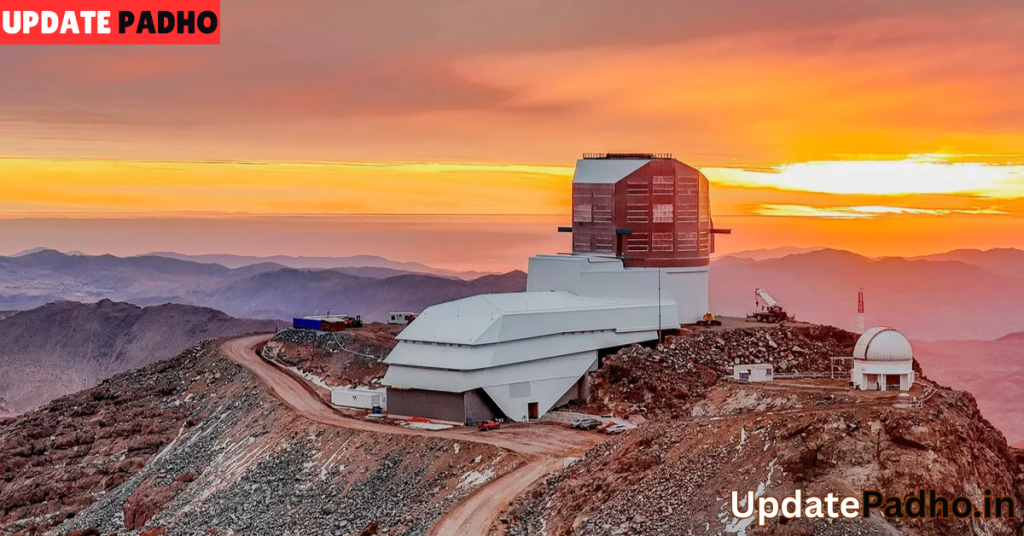In a groundbreaking achievement for both science and technology, the world’s largest digital camera has officially begun its cosmic observations. Developed as a part of the Large Synoptic Survey Telescope (LSST) project, the camera is a game-changer for our understanding of the universe. This massive digital device promises to unveil the mysteries of the cosmos in unprecedented detail, enabling astronomers to explore the universe like never before.
A Technological Marvel
The LSST camera, often referred to as the “Vera C. Rubin Observatory camera,” is a behemoth of technological innovation. Standing at about the size of a small car, it boasts an incredible 3.2 billion pixels, making it the largest digital camera ever created. The sheer size of the camera, along with its advanced components, allows it to capture images of the sky with extraordinary clarity. To put things into perspective, this camera can produce a resolution so detailed that each pixel is equivalent to one second of sky. This means the camera will allow scientists to zoom in on distant cosmic phenomena with an accuracy never before imagined.
The camera’s design is equally impressive. It features a 1.65-meter diameter lens and an array of sensitive sensors capable of capturing a wide range of wavelengths from visible light to infrared. The LSST camera is mounted on a large, rotating telescope at the Vera C. Rubin Observatory, located on the Cerro Pachón mountain in Chile. From this vantage point, the observatory will be able to survey the entire sky in high resolution, capturing images that will be essential in answering some of the most fundamental questions in modern astrophysics.
Why is This Camera So Important?
The LSST camera’s unprecedented size and resolution are not just feats of engineering—they are pivotal for advancing our understanding of the universe. The camera will play a key role in a ten-year survey of the sky, known as the “Legacy Survey of Space and Time (LSST).” This survey aims to map the entire sky in detail every few nights, producing vast amounts of data about celestial objects and phenomena, including stars, galaxies, and even transient events like supernovae and asteroids.
One of the key scientific goals of the LSST project is to study the nature of dark energy, a mysterious force that makes up about 68% of the universe and is responsible for its accelerated expansion. Despite making up such a large portion of the cosmos, dark energy remains one of the greatest unsolved puzzles in physics. The LSST’s high-resolution imaging capability will help researchers trace the expansion of the universe over time and identify clues that could shed light on the properties of dark energy.

The camera will aid in the discovery of thousands of new astronomical objects. By scanning the entire sky in such fine detail, astronomers expect to uncover previously undetected asteroids, comets, and even potentially hazardous objects that could pose a threat to Earth. The LSST’s ability to capture transient events—those that appear and disappear quickly, like supernovae—will provide new insights into the life cycles of stars and the dynamic nature of the universe.
Big Data Meets Astronomy
While the LSST camera’s capability to capture images is awe-inspiring, the real challenge comes in processing and analyzing the massive amounts of data it generates. Each night, the camera will capture around 15 terabytes of data—equivalent to hundreds of high-definition movies. Over the course of its 10-year survey, this adds up to petabytes of data that must be meticulously sorted, analyzed, and interpreted.
To manage this immense influx of data, the LSST project has incorporated cutting-edge computing and storage infrastructure. Data processing will be handled by powerful supercomputers, and machine learning algorithms will be used to sift through the information to identify significant astronomical events. The vast quantity of data will also be made publicly available to astronomers around the world, ensuring that the entire global community can benefit from the discoveries made by the LSST.
The integration of artificial intelligence and machine learning into this process is particularly exciting. These technologies will allow astronomers to identify patterns and anomalies that may be difficult for humans to discern. By automating parts of the analysis process, AI will help speed up the discovery of new phenomena and reduce the burden on researchers, allowing them to focus on interpreting the results.
A Global Collaboration
The LSST project is not just a triumph of technology; it’s also a prime example of international collaboration. Scientists and engineers from around the world have come together to make this ambitious project a reality. The Vera C. Rubin Observatory is named after a pioneering astronomer who made significant contributions to our understanding of dark matter and galaxy formation, and it stands as a symbol of the global effort to expand our knowledge of the universe.
The LSST will provide a treasure trove of data that will benefit not only professional astronomers but also the public. The open-access nature of the data means that anyone with the right tools and knowledge can contribute to the discovery process. Citizen scientists will be able to analyze images and perhaps make their own discoveries, creating a new avenue for public participation in science.
Looking to the Future
As the LSST camera begins its work, we stand on the brink of a new era in astronomy. The images and data it captures will not only provide answers to longstanding questions but will also spark new questions, driving the next generation of scientific discovery. With the ability to capture the entire sky in exquisite detail, the LSST will help us uncover the secrets of the universe’s most elusive phenomena, from dark energy to the birth of galaxies.



